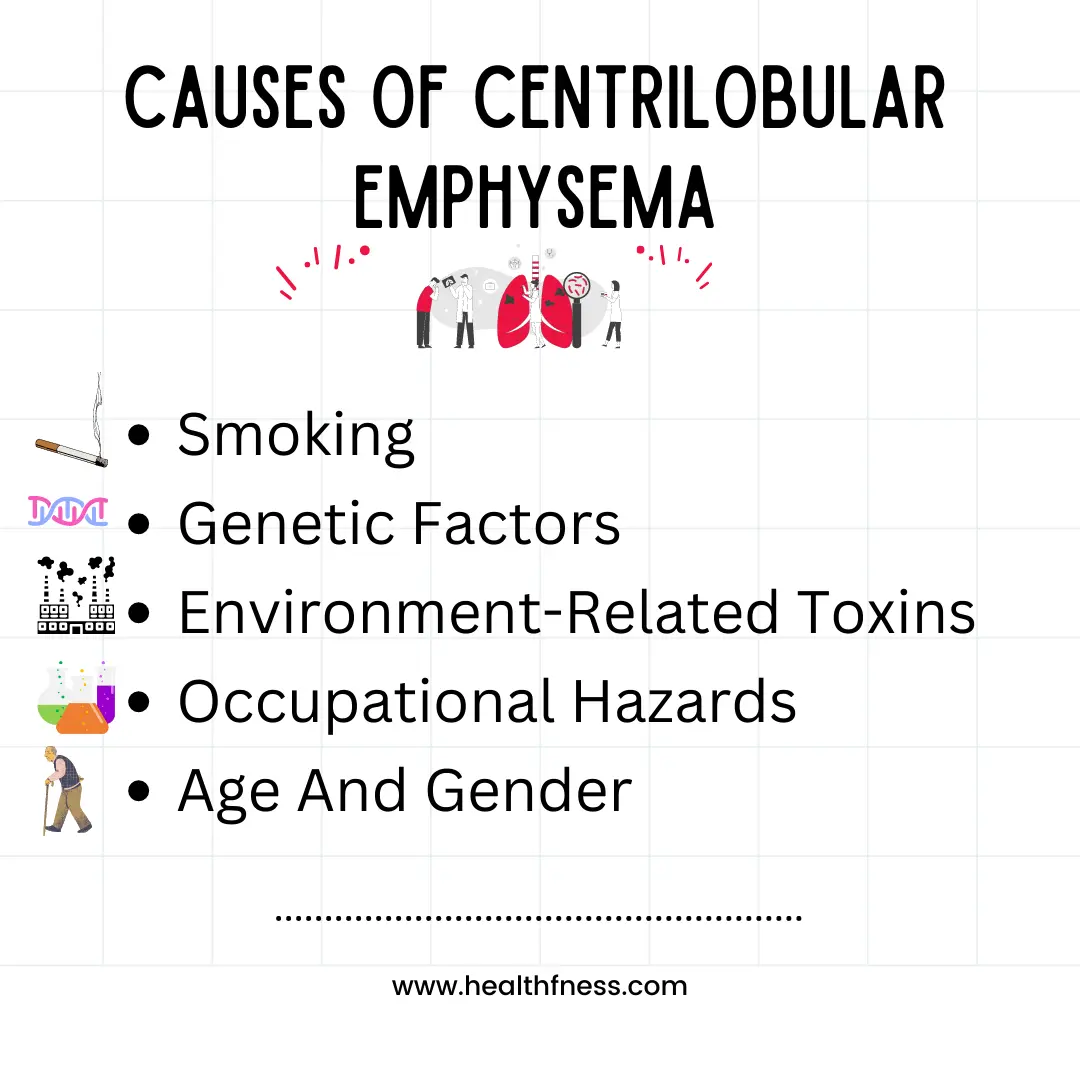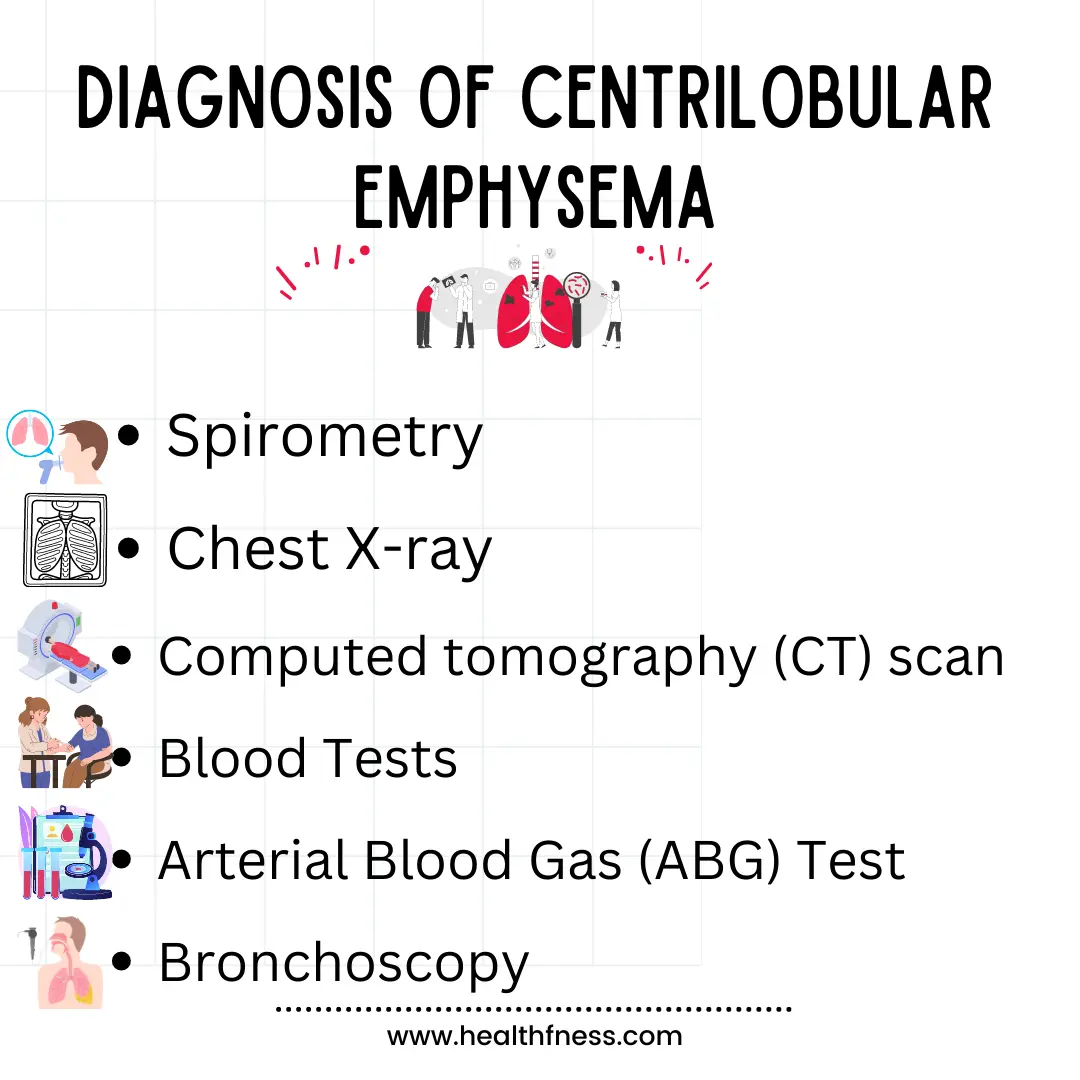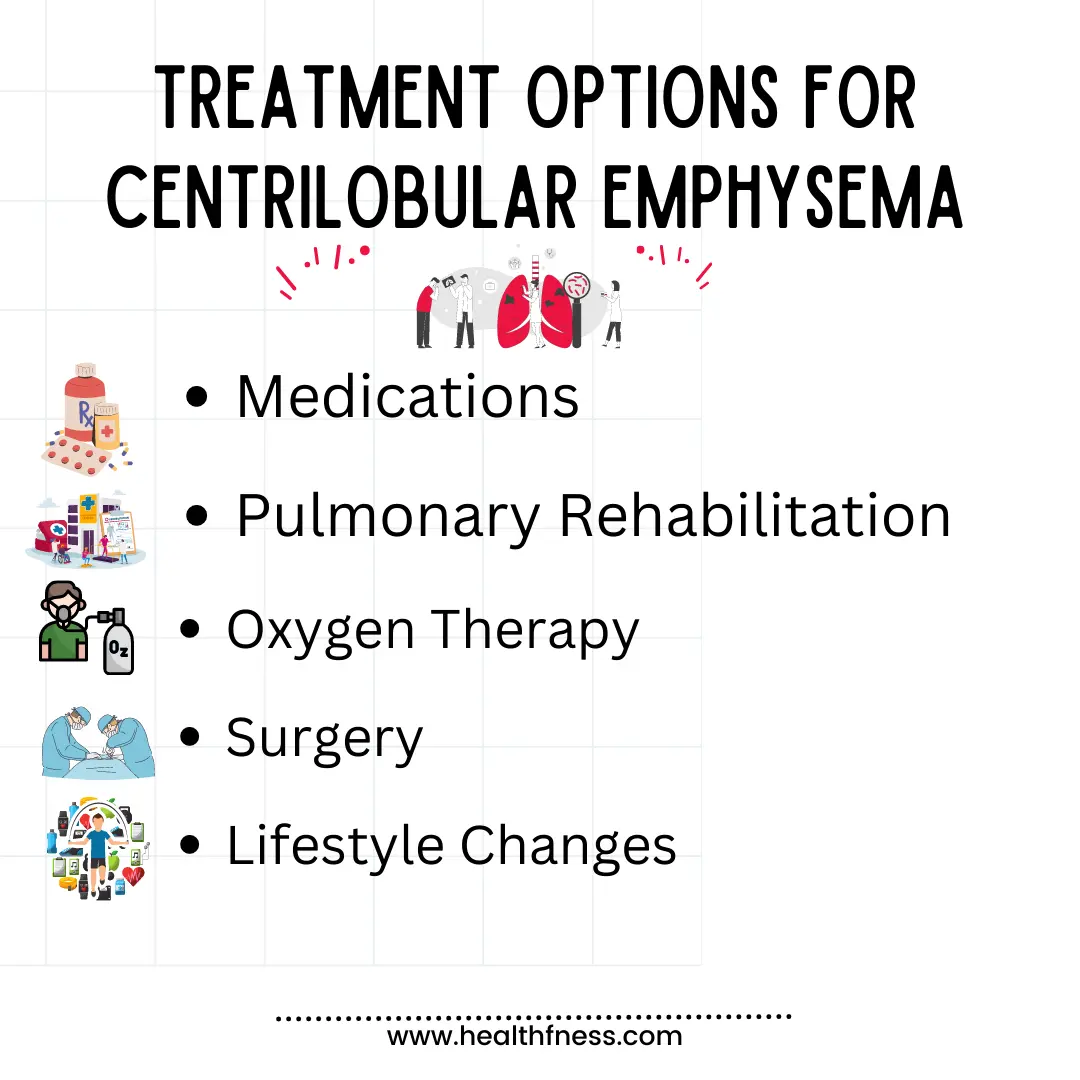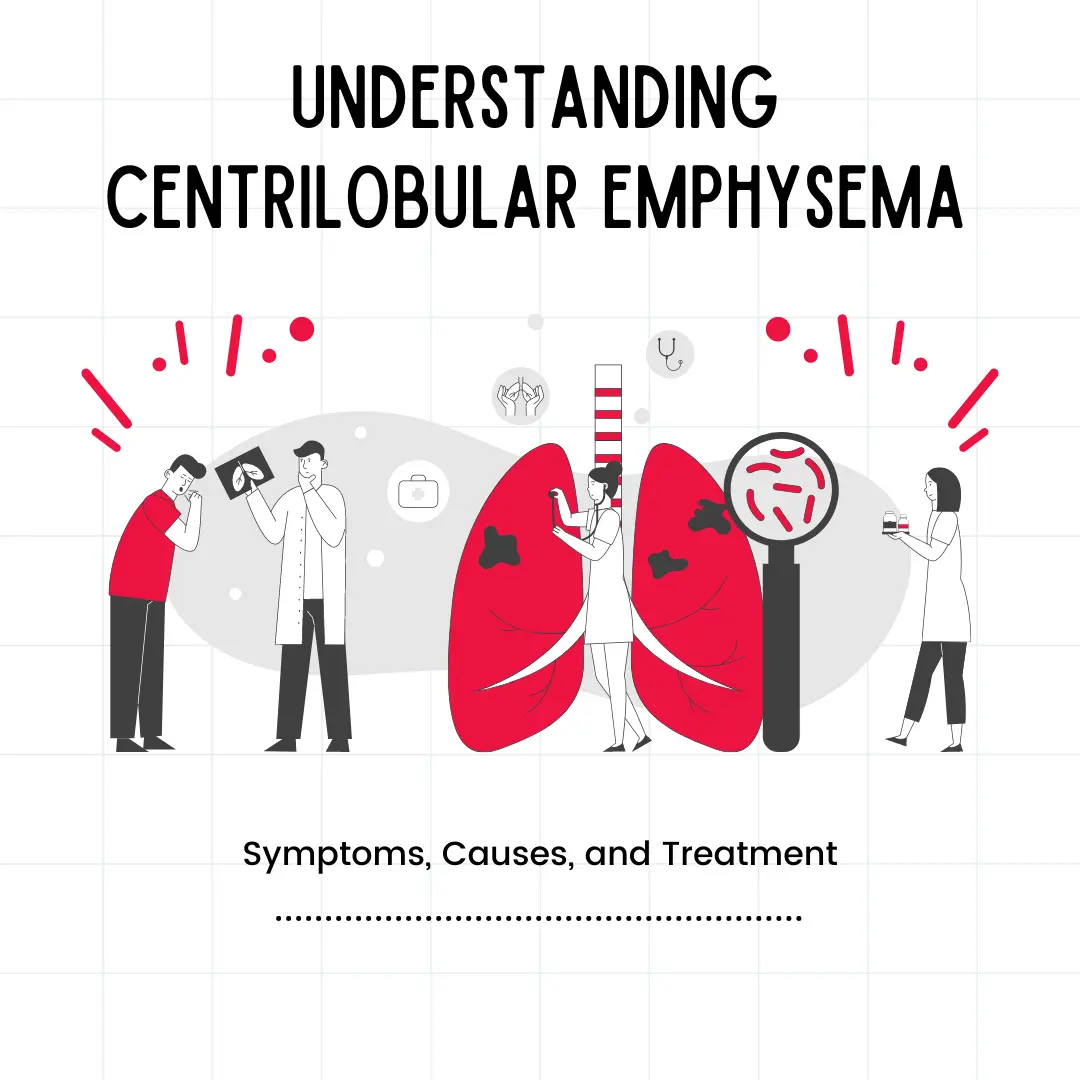Centrilobular emphysema is a type of chronic obstructive pulmonary disease (COPD) that affects or harm the proper functioning of the lungs. It is characterized or recognized by the destruction of the air sacs (alveoli) in the central part of the lung lobes. This leads to the formation of enlarged air spaces, making it difficult for the lungs to exchange oxygen and carbon dioxide effectively.
According to the American Lung Association, centrilobular emphysema is the most spreading type of emphysema and is usually associated with or triggered by smoking. The condition affects both men and women, and its prevalence increases with age.
What Is Centrilobular Emphysema ICD 10
ICD 10 code for centrilobular emphysema is J43.1. This code is used to classify and report cases of centrilobular emphysema in medical settings. The ICD-10 code J43.1 falls under the broader category of Chronic obstructive pulmonary disease (COPD), which also includes other types of emphysema and chronic bronchitis. It is important to use the correct ICD-10 code to ensure proper documentation of disease and billing for medical services related to the treatment and management of centrilobular emphysema.
Mild Centrilobular Emphysema
Mild centrilobular emphysema is the early stage of the condition, characterized by mild damage to the lung tissue. In this stage, the walls of the air sacs in the lungs are slightly weakened, which may not cause noticeable symptoms. So if a person has mild centrilobular emphysema then it is easy to reverse this disorder and enjoy a normal life.
Moderate Centrilobular Emphysema
Moderate centrilobular emphysema is the next stage after mild and is a form of condition that involves moderate damage to the lung tissue. In this stage, the walls of the air sacs in the lungs start to become thin and weakened, which can lead to symptoms such as chronic coughing, shortness of breath, and decreased exercise tolerance.
Severe Centrilobular Emphysema
A more severe type of illness, known as severe centrilobular emphysema, results in considerable lung tissue destruction. In extreme situations, the lungs’ air sacs’ walls weaken and become paper-thin, which makes it challenging for the lungs to function normally.
You May Also Like To Read: Lung Nodule ICD 10: Cracking The Code, Diagnosis, and Treatment
Causes Of Centrilobular Emphysema
Before we treat any disease we should know the causes of disease so a person can solve the root cause and continue a normal life. Some causes of centrilobular emphysema are:
Smoking
Smoking is the main cause of centrilobular emphysema. It damages the walls of the airways and leads to inflammation and destruction of the alveoli in the central part of the lung lobes. Over time, this damage leads to the formation of enlarged air spaces which badly disturb the functioning of the lungs.
Genetic Factors
Genetic factors mean factors that come from family members In some cases, genetic factors may play a role in the development of centrilobular emphysema. People with alpha-1 antitrypsin deficiency, a genetic disorder that affects the production of a protein that protects or shields the lungs from damage, are at higher risk of developing the disease of centrilobular emphysema.

Environment-Related Toxins
Centrilobular emphysema risk may be increased by exposure to environmental irritants including chemical fumes and air pollution.
Occupational Hazards
Some professions also aid the development of this disease like working in a chemical fume and dust if a person works in this environment for a long time the chances of developing this disease increase.
Age And Gender
Men are more chances than women to develop centrilobular emphysema, which is more common in elderly or aged persons.
You May Also Like To Read: Lung Cancer ICD 10: Understanding The Code, Diagnosis, And Treatment
Symptoms Of Centrilobular Emphysema
Centrilobular emphysema symptoms may resemble those of other emphysema forms including chronic obstructive lung disease (COPD). Depending on the degree of lung damage and the underlying cause of the disease, the intensity and course of symptoms may change.
Shortness of breath A person may feel a problem in breathing or discomfort in the chest.
Wheezing A high-pitched whistling sound while breathing.
Chronic cough with sputum production A persistent cough that produces phlegm or mucus and stuck in the throat.
Fatigue and weakness A general feeling of tiredness and lack of energy or low energy levels a person doesn’t want to do any work.
Decreased exercise tolerance Difficulty in performing physical activities or exercises due to shortness of breath.
Rapid breathing (tachypnea) Breathing faster than normal breathing, often accompanied by shortness of breath.
Weight loss (in advanced cases) Unintentional weight loss due to the body working harder to breathe and burning more calories and which leads to sudden weight loss.
Blue lips or fingernails (in advanced cases) A bluish tint to the skin, indicating or a sign of low oxygen levels in the blood.
You May Also Like To Read: Diaphoresis ICD 10: What You Need To Know About Diaphoresis
Diagnosis Of Centrilobular Emphysema
There are some common methods to diagnose this disease:
Spirometry
This is a test of a lung and how the lung is working and how the lung performs inhale and exhale procedures. By performing this test doctor can see the functioning of the lungs.
Chest X-ray
An x-ray of the chest was also done to diagnose the severity of the disease and whether is mild or at an advanced level. A picture of the lungs that can show signs of lung damage or other lung conditions.

Computed tomography (CT) scan
A type of imaging test that provides a more detailed view of the lungs and can show the extent of lung damage which helps a lot of doctors to plan a proper treatment plan for a patient.
Blood Tests
To check for oxygen and carbon dioxide levels in the blood, which can be affected by lung damage blood test is done in which blood is taken from a vein in a syringe and then sent to a lab for testing.
Arterial Blood Gas (ABG) Test
A blood test measures the acidity, oxygen, and carbon dioxide levels in the blood and is similar to a blood test to some extent.
Pulmonary Function Tests
A series of tests measure how well the lungs are functioning, including the amount of air you can inhale and exhale, and how quickly you can do it.
Bronchoscopy
A procedure or a process in which a thin, flexible tube with a camera is inserted into the lungs to examine the airways and collect tissue samples for analysis and it can be a painful.
Treatment Options For Centrilobular Emphysema
Centrilobular emphysema has no known cure, however, treatment can help manage symptoms and reduce the disease’s progression. Following are some typical medical options:
Medications
The most common treatment for any disease is medicines. Bronchodilators, corticosteroids, and antibiotics can help manage symptoms and prevent infections. If the symptoms in uncontrolled then a person needs further treatment.
Pulmonary Rehabilitation
A program that includes exercise, breathing techniques, and education on managing the condition. This is very helpful for a person who suffers from this disease.

Oxygen Therapy
Supplemental oxygen can help improve oxygen levels in the blood and reduce shortness of breath. Because in this disease a person has low energy levels so the doctor may prescribe oxygen therapy to insure that the patient has a normal oxygen level.
Surgery
In advanced cases, surgical options like lung volume reduction surgery or lung transplant may be considered. Because in this type of case, the lung is badly affected by centrilobular emphysema.
Prevention
While there is no guaranteed way to prevent centrilobular emphysema, there are some steps that individuals can take to reduce their risk of developing such a deadly disease:
Quit Smoking
As smoking is the major contributor to centrilobular emphysema, it’s crucial to stop smoking or limit your exposure to secondhand smoke. A person with this disease must quit smoking so medications work properly.
Avoid Air Pollution
Avoid exposure to pollutants like car exhaust, dust, and chemicals. Wear a mask when going out so you can avoid air pollution to some extent.
Practice Good Hygiene
Avoid close contact with those who have respiratory infections and constantly wash your hands.
Get Vaccinated
Get vaccinated against the flu and pneumonia to reduce the risk of respiratory infections.
FAQS
Conclusion
Centrilobular emphysema is a type of disorder that harms lung functioning. The ICD 10 Code for this disorder is J43.1. This disease could be mild, moderate, or severe and treated accordingly. Causes of this disorder are smoking, genetic factors, pollutants, and some professions also. Symptoms include shortness of breath, continuous coughing, weakness, and fatigue. Diagnoses include x-rays. CT scan, spirometry, blood test, etc. Treatment options are available like some medicines, oxygen therapy, Rehabilitation, and surgery. Life expectancy in this disease depends upon the severity of the disorder. Preventions one should take to decrease the chances of developing this disorder are to quit smoking, keep good hygiene, and get vaccinated.
Video Credits:

Dr. Mark Jenkins, MD - General Physician (California, USA)
Dr. Mark Jenkins is a board-certified general physician based in the United States, specializing in preventive medicine, nutrition, and lifestyle health. With years of clinical experience in primary care, he is dedicated to helping patients and readers alike make informed, science-based decisions about their well-being.
As a trusted medical reviewer and contributor to Healthfness.com, Dr. Jenkins ensures that all health content meets the highest standards of accuracy, safety, and evidence-based medicine. His expertise bridges modern medical science with practical, everyday wellness strategies, making complex topics approachable for all audiences.
Outside the clinic, Dr. Jenkins is passionate about living the healthy lifestyle he teaches. He enjoys hiking with his dog, experimenting with vegetarian cooking, and exploring the latest health research. He believes that small, consistent lifestyle changes lead to lasting health improvements, and he aims to inspire readers to take proactive steps toward a healthier, happier life.
Explore more of Dr. Jenkins’ evidence-based insights at Healthfness.com



